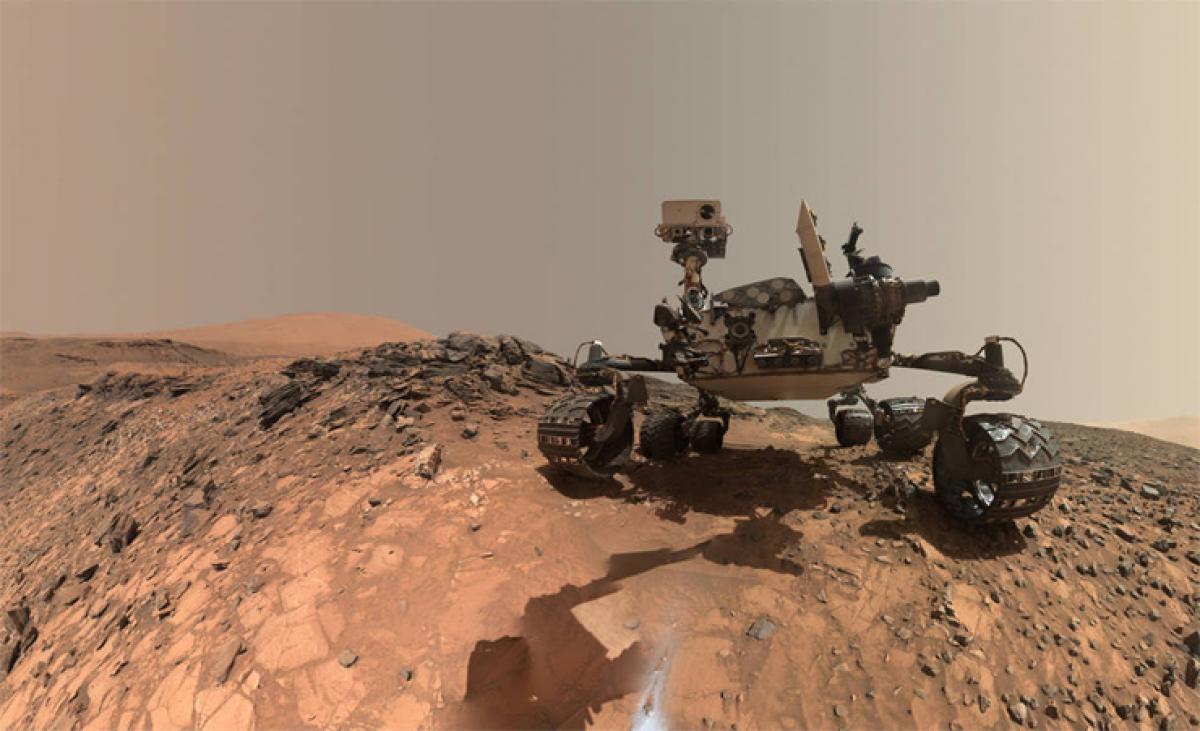Live
- Guinness World Record for continuous Hanuman Chalisa chanting
- Dr LB College, Woxsen teams win in Climate Tank Accelerator event
- CM Revanth petitions for change in Paleru rly line
- Udupi MP seeks more key highways on top priority
- New diet plan rolled out at welfare hostels
- HRF demands for nation-wide caste census
- SP launches Medicover family health card
- Chiranjeevi Visits Allu Arjun for Lunch Amid Ongoing Legal Turmoil
- Covid ‘scam’ FIR row: Congress pursuing politics of vengeance, says BJP
- Decades-old temple re-opens after 46 years in Sambhal
Just In

x
Highlights
After investigating the \"Marias Pass\" region where it found a geological contact zone and rocks that are unexpectedly high in silica and hydrogen content, NASA\'s Curiosity Mars rover has now moved to an entirely new location on the Red Planet.
After investigating the "Marias Pass" region where it found a geological contact zone and rocks that are unexpectedly high in silica and hydrogen content, NASA's Curiosity Mars rover has now moved to an entirely new location on the Red Planet.
.jpg)
The hydrogen indicates that the area was once brimming with water. Hydrogen in the ground beneath the rover is monitored by the rover's Dynamic Albedo of Neutrons (DAN) instrument.
“The ground about one-metre beneath the rover in this area holds three or four times as much water as the ground anywhere else Curiosity has driven during its three years on Mars,” said DAN principal investigator Igor Mitrofanov from Space Research Institute in Moscow.
DAN first detected the unexpectedly high level of hydrogen using its passive mode.
Later, the rover drove back over the area using DAN in active mode. The measurements confirmed hydrated material covered by a thin layer of drier material.
In the “Marias Pass” region, Curiosity successfully used its drill to sample a rock target called "Buckskin" and then used the camera on its robotic arm for multiple images to be stitched into a self-portrait at the drilling site.
Curiosity is carrying with it some of the sample powder drilled from “Buckskin”.
Silica is a rock-forming chemical containing silicon and oxygen, commonly found on Earth as quartz.
Hydrogen has been detected at low levels everywhere Curiosity has driven and is interpreted as the hydrogen in water molecules or hydroxyl ions bound within or absorbed onto minerals in the rocks and soil.
Curiosity initially noted the area with high silica and hydrogen on May 21 while climbing to a site where two types of sedimentary bedrock lie in contact with each other.
Such contact zones can hold clues about ancient changes in environment, from conditions that produced the older rock type to conditions that produced the younger one.
Curiosity reached the base of “Mount Sharp” region after two years of fruitfully investigating outcrops closer to its landing site and trekking to the mountain.
The main objective now is to examine layers of lower “Mount Sharp” for ancient habitable environments and evidence about how early Mars environments evolved from wetter to drier conditions.

Next Story
More Stories
ADVERTISEMENT
© 2024 Hyderabad Media House Limited/The Hans India. All rights reserved. Powered by hocalwire.com







